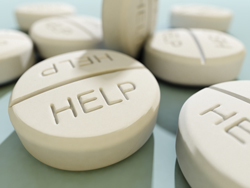Opiates, a family of drugs that includes morphine, heroin Oxycontin and a large number of other painkillers, are commonly used both for medicine as well as abused for recreation. However, when someone needs to have his or her system purged of these drugs, an opiate detox is what’s in order. Of course, for those who are going to go through the experience, it’s important to know certain things.
How It Works
The human body naturally cleanses itself of substances, if given time, and opiates are no different. For individuals who have only experienced light opiate use, such as through normal medication, there is often not a need for a detox as such; all they have to do is wait and the drug will be filtered out of their systems. This doesn’t mean there won’t be some discomfort and light opiate withdrawal symptoms, but no medical assistance should be required. The reason is that, while the body might crave opiates, light use hasn’t led to a crippling reliance on the drug.

Opiate detox can save your life!
For those who have been using opiates longer, or in greater amounts, the physical dependance is greater. So, rather than just experiencing withdrawal pangs and lighter symptoms like sweating, nausea and goose flesh, opiate detox for addicts can have much more serious consequences. In many cases detoxing too suddenly can lead to shock, damage to the body and even death.
Gradual Opiate Detox
For more extreme cases of opiate addiction and usage, it’s important to step down usage as part of the opiate detox. Additionally, it’s important that medical personnel be on hand in case anything does go wrong, or the opiate user goes into shock. It’s for this reason that many detox programs for individuals with more intense usage habits tend to be in-patient centers rather than out-patient ones.
The theory behind gradual opiate detox is that it allows the user to step down slowly, getting his or her body used to the smaller and smaller amounts of opiates in its system. Once the body has reached a much smaller level of opiates, then usage can stop altogether safely. It’s akin to coming down from the roof of a tall building, and just jumping off a few stairs. It’s safer, easier and while it might be scary, painful or uncomfortable, it’s much less likely to result in permanent damage or in death that a sudden stop would very likely cause the user.
Resources:








